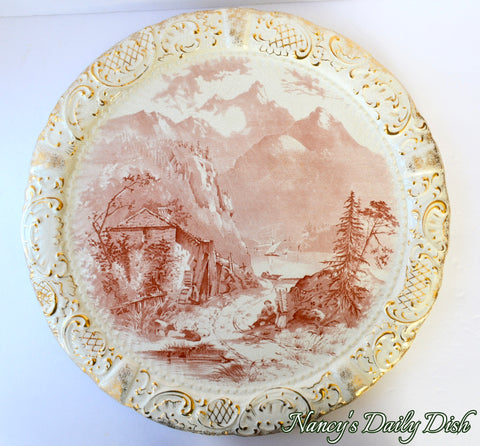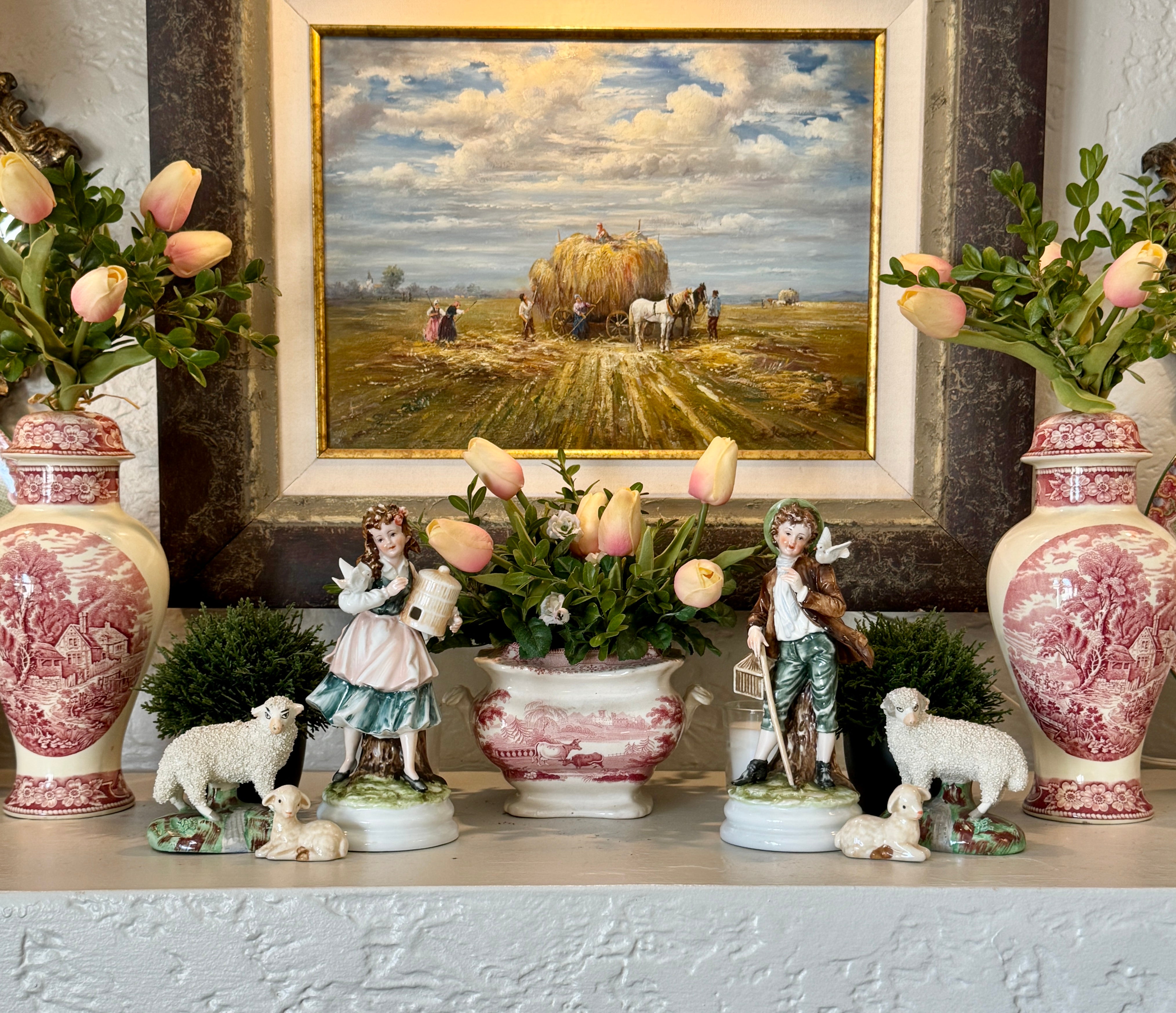ENORMOUS Antique Red -dish / Brown Transferware Wall Plaque Charger Grindley Lake Lucerne
$399.99 $249.99
Brand Grindley
For consideration, here is a very large antique wall plaque by English potter W. H. Grindley who operated at Cobridge works in Tunstall, Stoke On Trent beginning in 1880. This massive piece depicts a cabin on Switzerland's Lake Lucerne engraved from the 1869 painting by Herman Ottomar Herzog. The transfer is a rusty, reddish brown color and is in great detail. The plaques foot-rim has holes drilled in (done at time of manufacture as this was intended to hang on the wall) with wire attached for hanging. There is an elaborate raised border highlighted with gold which creates a stunning frame for the idyllic scene. Fully marked on back as shown. This mark was used by Grindley between 1891-1914 dating this piece to that time frame. It is well over 100 years old.
Herman Ottomar Herzog was born in Bremen, Germany, on November 15, 1831. He studied art at the Dusseldorf Academy, starting in 1848, under several classical landscape painters. In 1855, Herzog made his first visit to Norway. The trip was a milestone in Herzog's career as it exposed him to the rugged landscape of the Norwegian wilderness and instilled in him a lifelong sense of nature that was to show in all his work. During the late 1850's and early 1860's, Herzog's fame spread throughout Europe. His paintings were collected for their dynamic realism and strong atmospheric effects. Among his patrons were several of Europe's royal families, including Queen Victoria of England and Grand Duke Alexander of Russia. He exhibited in the Paris Salon in 1863 and 1864, winning an Honorable Mention. While in Paris, it is thought that Herzog came into contact with the popular Barbizon School, whose adherents painted the grandeur and beauty of Nature in a romantic and realistic style. The effect of the Barbizon painters can also be seen in Herzog's poetic handling of mood and color. Although he was still in Europe, Herzog sent several paintings for exhibition at the Pennsylvania Academy from 1863 to 1869. He had several friends in the United States and they were developing a rather good demand for his work. It is not known exactly when Herzog decided to come to America. Sometime in the late 1860's he settled in Philadelphia. Besides wanting a developing market for his work, Herzog left Bremen due to rising political agitation by Prussia, which had just absorbed Bremen into its domain. In America, Herzog continued to paint his romantic landscapes, finding the American wilderness well suited to his style. In 1871, he traveled up the Hudson River on a painting tour. In 1873, he took his first trip west, going to Yosemite, then to Wyoming, Oregon, and along the West Coast to the Coronado Island, near the Mexican border. Herzog made several journeys west, finding each trip more fruitful than the last. He became known for his depictions of Yosemite, receiving great acclaim for a fine El Capitan, much in the style of his fellow countryman and painter Albert Bierstadt. His last trip west was in 1905, at the age of 74. In 1876, Herzog participated in the Centennial Exhibition in Philadelphia, showing a Norwegian scene and a Yosemite landscape, which earned him a Bronze Medal. In 1882, he exhibited two paintings of Pennsylvania at the National Academy Annual Exhibition. As Herzog grew older, he continued to paint actively. He retained all his control and abilities even into his one hundredth birthday. In 1931, he participated in a gallery exhibition with his son, Lewis Herzog. Herman Herzog died on February 6, 1932, in his home in Philadelphia, at the age of 100.
Source: AskArt
measures appx. 17" x 1 1/4"
Condition: Excellent. No chips or cracks, there is crazing which adds character to its patina
























